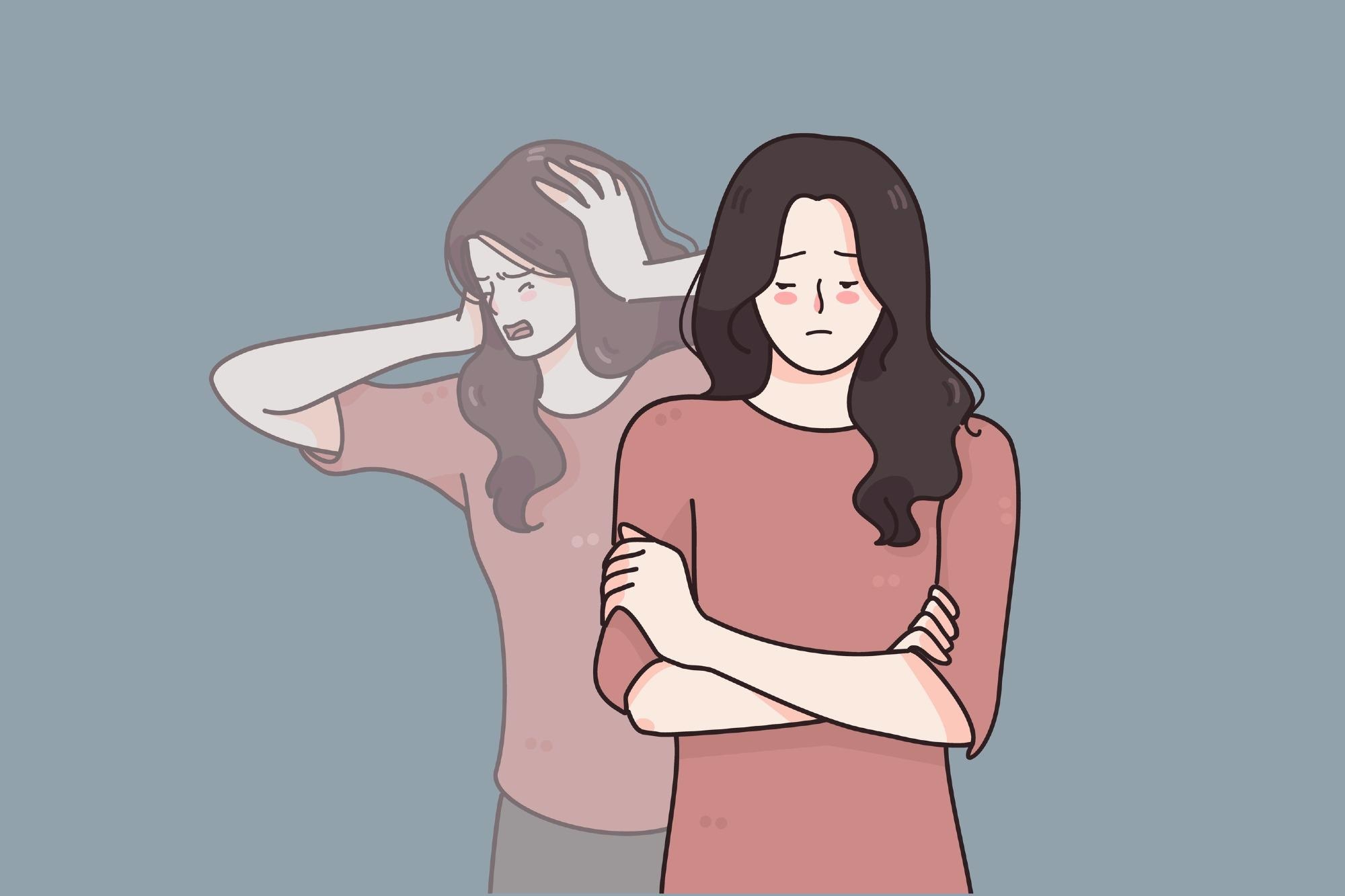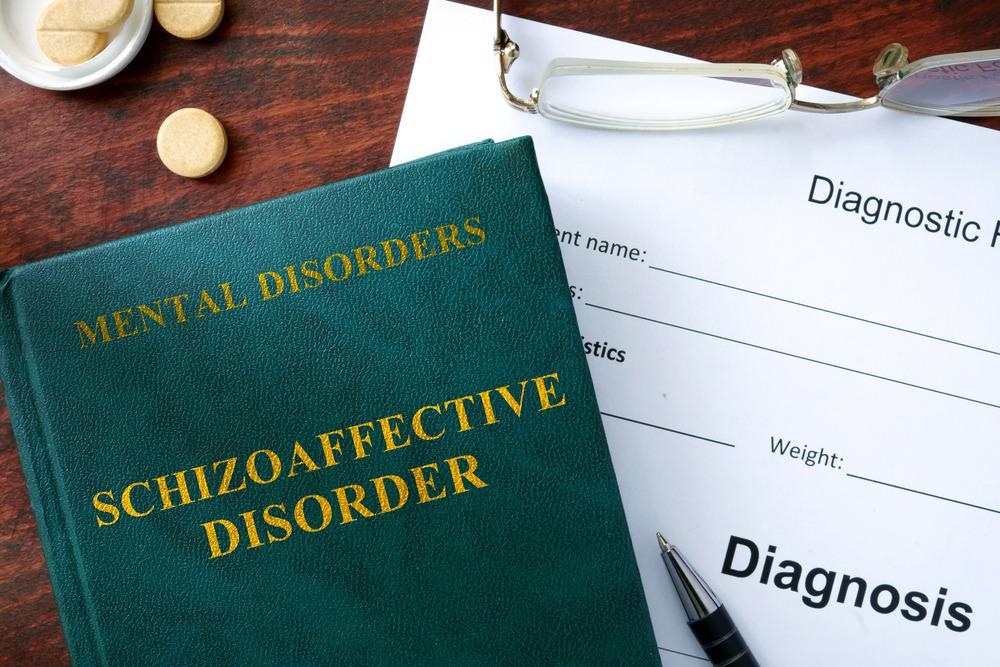Schizophrenia and schizoaffective disorder are two separate psychiatric conditions that remain as two distinct diagnostic systems. Schizoaffective disorder is critically distinguished from schizophrenia (SZ) based on the presence of prominent mood symptoms, as opposed to the functional impact throughout the illness.
While both syndromes share psychotic symptoms, schizoaffective disorder can be distinguished from schizophrenia in that it does not require evidence of a decline in role functioning; emphasizing the prominence of its concurrent mood disorder.
Schizoaffective disorder also exists as a separate diagnostic entity in the Diagnostic and Statistical Manual of Mental Disorders 5th Edition (DSM-5), as well as the International Statistical Classification of Diseases and Related Health Problems, Tenth Revision (ICD-10).

Image Credit: Vectorium/Shutterstock.com
Differential Diagnosis Of Schizophrenia and Schizoaffective Disorder
The prefix “Schizo-“ in schizoaffective refers to the psychotic symptoms, whereas “-affective” refers to the mood component of the disorder.
Schizophrenia is also associated with mood disturbances; distinct from schizoaffective disorder, which can only be made if the mood disturbances remain for a considerable quantity of the duration of the illness.
Most poignantly, schizoaffective disorder is contingent upon individuals having a documented history of a severe mood episodes.
The Overlap Between Schizophrenia And Schizoaffective Disorder
For a patient to be add diagnosed with schizoaffective disorder, the patient must:
- Meet the criteria for active symptoms of schizophrenia (delusions, hallucinations, erratic behavior, negative symptoms) and meet the criteria for a mood episode over a ‘substantial period’. This mood episode can be depressive or manic. Manic episodes are characterized by high energy, which manifests as sleeplessness, psychosis, hallucinations, grandiose delusions, or paranoid rage. Depressive episodes are characterized by low mood and decline in function. The latter mood episodes are the ‘affective’ portion of the disorder
- Must have had > 2 weeks of psychotic symptoms, without experiencing any mood symptoms in the same period of illness. Therefore, if psychotic symptoms are only apparent when a mood episode occurs, the patient is likely to suffer a mood disorder with psychotic features.
Schizoaffective disorders are controversial and considered to be a disorder that exists on a continuum between schizophrenia and mood disorders. Both DSM-IV and ICD-10 describe them as "schizophrenia, schizotypal and delusional disorders" with ICD-10 not requiring the absence of mood symptoms for a certain time.
Schizoaffective disorder develops in approximately one in 200 people, as compared to schizophrenia which affects approximately 1% of the population.
The History of Schizoaffective Disorder and Evolution of its Characterization
The first documented use of the term schizoaffective disorder was in 1933 by Jacob Kasanin, MD. He first described this disorder in nine patients with acute schizoaffective psychosis, which appeared with abrupt onset.
The time term appeared in the first edition of the DSM, and was classified as a subtype of schizophrenia, termed “schizo-affective type”. This was defined as a “significant admixture of schizophrenic and affective reactions”. The diagnostic criteria for schizoaffective disorder were developed in the third edition of the DSM in 1987. The criteria for schizoaffective disorder continued to change with subsequent editions of the manual.
In the most current version, DSM-5, the following criteria for schizoaffective disorder include:
- An uninterrupted period of illness during which a major mood episode depressive or manic) concurrent with criterion A of schizophrenia. Criterion a includes five key symptoms of psychotic disorders
- Delusion
- Disorganise door catatonic behavior
- Negative symptoms
- Disorganized speech
- Hallucinations
- Hallucinations or delusions that last for more than two weeks in the absence of a major mood episode during the entirety of the illness
- symptoms that meet the criteria for a major mood episode being present for most of the active and residual portions of the illness
- The effect is not a result of substance use, for example, recreational or medication comes out over another medical condition
This contrasts with the clinical description of schizophrenia, which is associated with three major clusters of symptoms: positive, negative, and disorganized:
- Positive symptoms are classified as delusions And hallucinations
- Negative symptoms are associated with anhedonia, asociality, blunted affect, avolition (a lack of motivation), and alogia (an inability to speak, unproductive speech, and decreased ability to think)
- Disorganized symptoms include disorganized speech on the behavior
The DSM-5 distinguishes between schizophrenia with mood symptoms, bipolar disorder, and schizoaffective disorder. The most recent distinction in the criteria between the DSM-4 and DSM-5 is that the latest redefines schizoaffective disorder over its longer children of course rather than as episodic changes in behavior. This has subsequently resulted in the criticism of an increased likelihood of lowered rates of diagnosis of schizoaffective disorder.
Despite the evolution of schizoaffective disorder classification, diagnosis is considered to be controversial.

Image Credit: Vitalii Vodolazskyi/Shutterstock.com
Controversy Associated with Schizoaffective Disorder
The controversy surrounding the identity of schizoaffective disorder is Its existence as an independent disorder. Alternatively:
- Schizoaffective disorder can be considered to be a form of schizophrenia, a form of bipolar disorder, or a form of depressive disorder
- Schizoaffective disorder is heterogeneous, existing on a spectrum between mood and psychotic disorders
Schizoaffective disorder is also considered to lack validity due to poor diagnostic reliability. The diagnosis of schizoaffective disorder is heavier disputed based on theory. In a study that analyzed the extent of the diagnostic shift in schizoaffective disorder patients, researchers found that a total of 36% of patients with an initial diagnosis of schizoaffective disorder were subsequently re-diagnosed as having schizophrenia, affective disorders, or other disorders.
Moreover, patients who were diagnosed with schizoaffective disorder after undergoing a second review had received a different diagnosis compared to their first assessment combat at which point had been diagnosed with affective disorder, schizophrenia, or other disorders. Researchers concluded that this diagnostic shift is problematic, with a shift towards the re-diagnosis of schizophrenia.
Despite the controversy surrounding the validity of schizoaffective disorder, it is a distinct disorder relative to schizophrenia. Most prominently, mood symptoms do not always concur with the presence of psychotic in schizophrenia; psychotic symptoms are almost always present, but mood symptoms can appear and disappear. In schizoaffective disorder, psychotic symptoms are not always present during periods of psychosis, fat is during depression or mania.
Continue reading about schizoaffective disorder here!
References:
- Wilson JE, Nian H, Heckers S. (2014) The schizoaffective disorder diagnosis: A conundrum in the clinical setting. Eur Arch Psychiatry Clin Neurosci. doi:10.1007/s00406-013-0410-7.
- National Institute of Mental Health. Schizophrenia. Updated February 2016. Available at: https://www.nimh.nih.gov/health/topics/schizophrenia period last access November 2021.
- Abrams DJ, Rojas DC, Arciniegas DB. (2008) Is schizoaffective disorder a distinct categorical diagnosis? A critical review of the literature. Neuropsychiatr Dis Treat. doi:10.2147/ndt.s4120.
- Abrams DJ, Rojas DC, Arciniegas DB. (2008) Is schizoaffective disorder a distinct categorical diagnosis? A critical review of the literature. Neuropsychiatr Dis Treat. doi:10.2147/ndt.s4120.
Further Reading